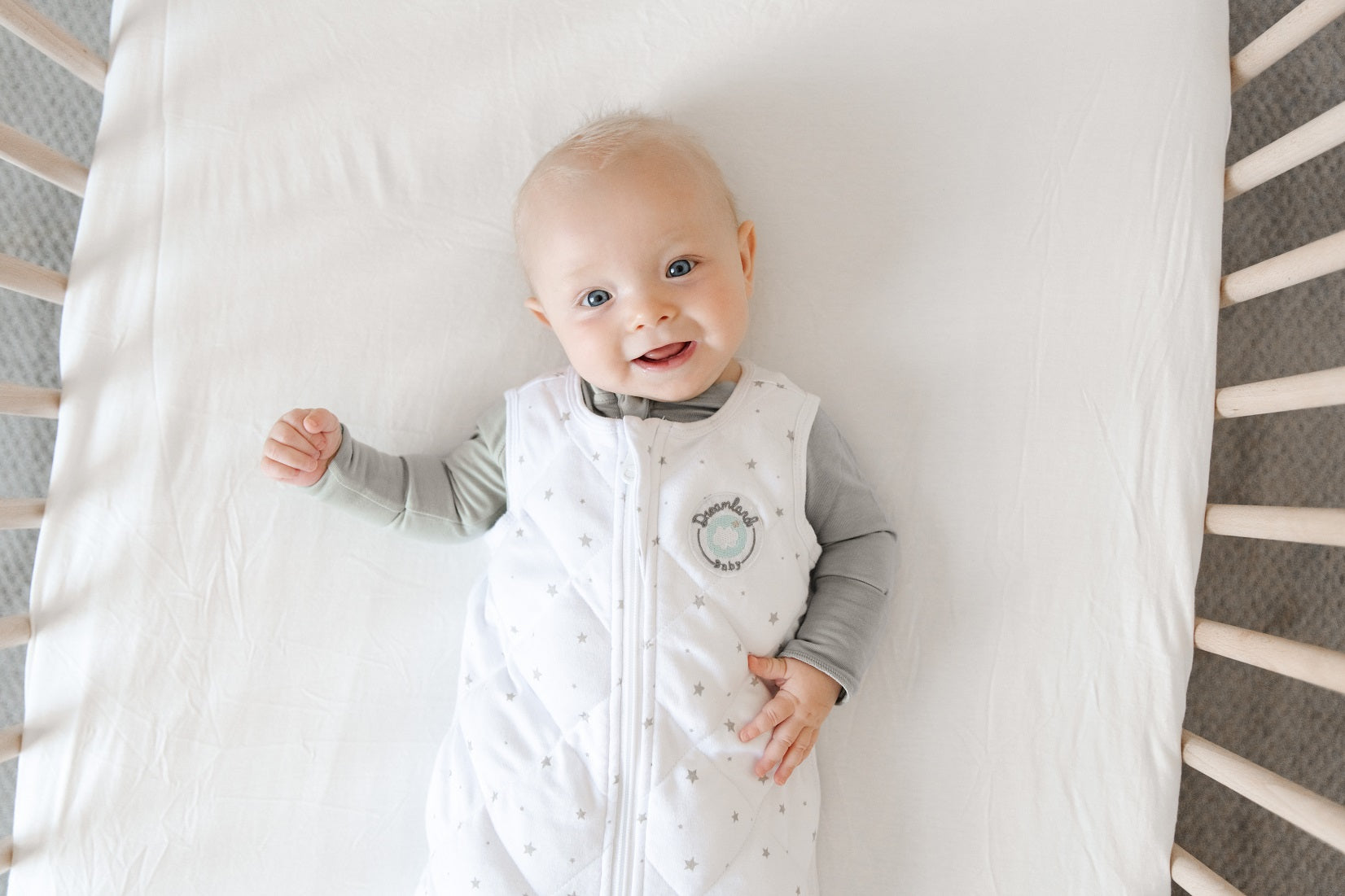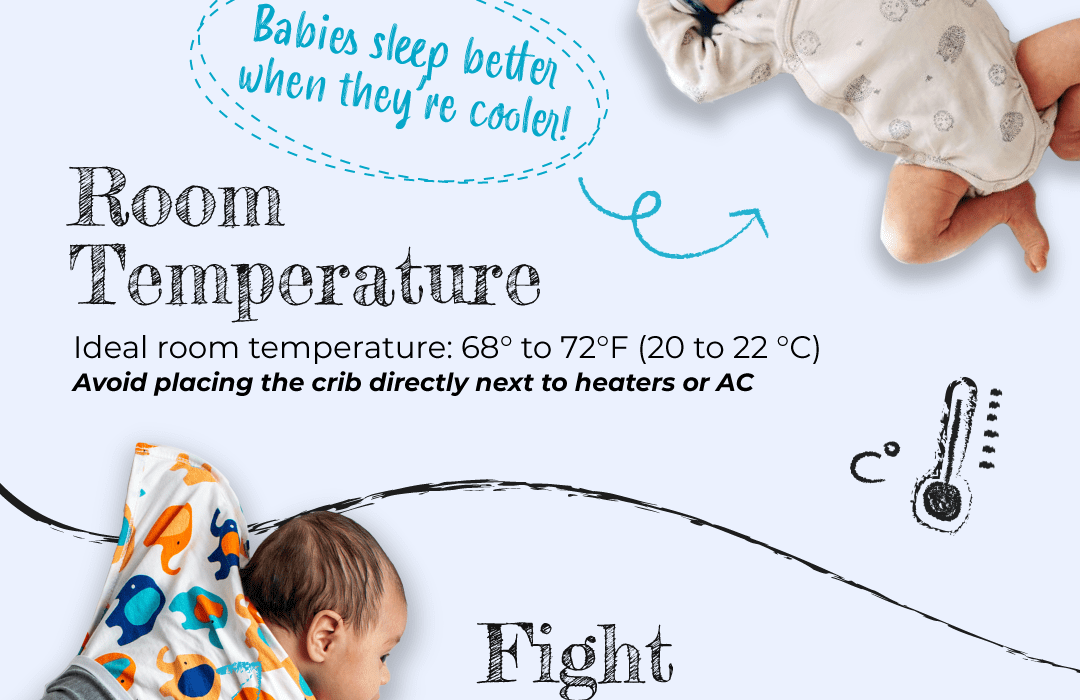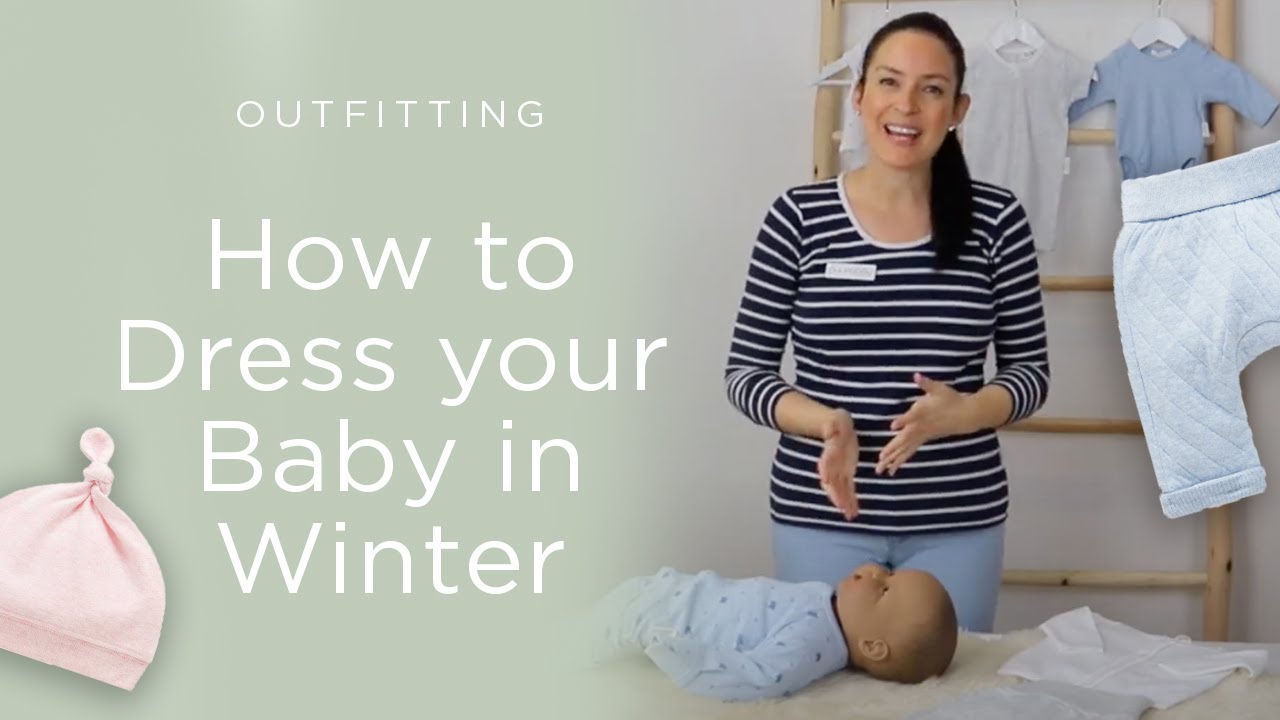Choosing the right newborn sleepwear for winter is crucial for keeping your baby warm throughout the night. Opt for materials like fleece or cotton blends to ensure comfort and warmth.
As winter approaches, parents often worry about their newborn’s comfort during sleep. Babies are more sensitive to temperature changes, making proper sleepwear essential. Selecting the right attire not only keeps them warm but also promotes better sleep quality. Layers are a smart choice, allowing easy adjustments to suit varying indoor temperatures.
Consider sleep sacks or footed pajamas for added coziness. Always check for safety features like snug fits and avoid loose items that could pose a hazard. By prioritizing warmth and comfort, you can help your baby enjoy restful nights all winter long.
Table of Contents
Introduction To Newborn Winter Sleepwear
Keeping your baby warm during winter is vital. Newborns can easily get cold at night. Choosing the right sleepwear is essential for their comfort and safety. This guide explores the best options for winter sleepwear.
Importance Of Warmth And Comfort
Warmth and comfort are crucial for newborns. Babies have small bodies that lose heat quickly. Here are key reasons to prioritize warmth:
- Better Sleep: Warm babies sleep longer and sounder.
- Health: Prevents chills and colds, ensuring good health.
- Happy Mood: Comfortable babies are happier and less fussy.
Look for sleepwear made from soft, breathable materials. Cotton and fleece are great choices. They provide warmth without overheating.
Safety Considerations
Safety is paramount for newborn sleepwear. Follow these tips to keep your baby safe:
- Fit: Choose snug-fitting pajamas. Avoid loose clothing that can pose a risk.
- Materials: Select flame-resistant fabrics. Check for safety labels.
- Layering: Dress your baby in layers. Use a onesie under a sleep sack for added warmth.
Never use heavy blankets. They can increase the risk of suffocation. Instead, opt for a sleep sack or wearable blanket.
Regularly check your baby’s temperature. Adjust their clothing as needed to prevent overheating.
Fabrics For Winter Sleepwear
Choosing the right fabric for your baby’s winter sleepwear is crucial. The right material keeps your little one warm and comfortable. It also ensures a restful night’s sleep. Below are the best fabrics for winter sleepwear.
Choosing The Right Material
Look for materials that provide warmth and breathability. Here are some popular fabric options:
- Cotton Flannel – Soft and warm, perfect for chilly nights.
- Fleece – Lightweight yet very insulating.
- Merino Wool – Natural and breathable, ideal for sensitive skin.
- Microfiber – Soft and durable, great for winter wear.
Pros And Cons Of Popular Fabrics
| Fabric | Pros | Cons |
|---|---|---|
| Cotton Flannel |
|
|
| Fleece |
|
|
| Merino Wool |
|
|
| Microfiber |
|
|
Choose fabrics that suit your baby’s needs. Comfort and warmth are key. Always test the fabric against your baby’s skin. This way, you ensure a cozy sleep experience.
Layering Strategies For Extra Warmth
Keeping your baby warm during winter nights is essential. Layering sleepwear can provide extra warmth. It helps maintain a comfortable temperature throughout the night.
How To Layer Effectively
Layering is simple. Follow these tips for effective layering:
- Base Layer: Start with a snug-fitting onesie.
- Middle Layer: Use a soft, breathable sleep sack.
- Outer Layer: Choose a cozy, fleece blanket or quilt.
Always opt for materials that are gentle on your baby’s skin. Avoid anything itchy or irritating.
Use this table to find the best materials for each layer:
| Layer Type | Recommended Materials |
|---|---|
| Base Layer | Cotton, Bamboo |
| Middle Layer | Fleece, Wool |
| Outer Layer | Down, Polyester |
Avoiding Overheating
Keeping your baby warm is important, but overheating is dangerous. Follow these tips to avoid overheating:
- Check your baby’s neck for warmth.
- Keep the room temperature between 68°F and 72°F.
- Use lightweight materials for the base layer.
Signs of overheating include:
- Flushed skin
- Excessive sweating
- Rapid breathing
Dress your baby in layers that you can easily remove. Always prioritize comfort and safety.
Essential Features In Newborn Sleepwear
Choosing the right sleepwear for your baby is crucial. The right features ensure warmth and comfort. Here are key elements to consider.
Ease Of Use
Sleepwear should be easy for parents to use. Look for these features:
- Front Zippers: Easy to open for quick changes.
- Snap Buttons: Simple to fasten and unfasten.
- Stretchy Necklines: Make dressing simple and quick.
Choose sleepwear that allows for swift diaper changes. This helps during those late-night wake-ups.
Adjustability For Growth
Newborns grow fast. Adjustable sleepwear helps accommodate this growth. Consider these options:
- Expandable Cuffs: Lengthen as your baby grows.
- Roomy Fits: Provide extra space for movement.
- Adjustable Straps: Ensure a snug fit over time.
Look for sleepwear with features that adjust easily. This prolongs the life of the outfit.
Sleep Sacks Vs. Traditional Pajamas
Choosing between sleep sacks and traditional pajamas can be tough. Both options keep your baby warm during winter nights. Each has unique features and benefits. Understanding these can help you make the right choice.
Benefits Of Sleep Sacks
Sleep sacks offer several advantages for newborns:
- Safe Sleep: Sleep sacks reduce the risk of suffocation.
- Temperature Control: They provide consistent warmth all night.
- Easy Diaper Changes: Zip or snap closures allow quick changes.
- Freedom of Movement: Babies can move their arms and legs easily.
- Reduce Startle Reflex: Sleep sacks help soothe fussy babies.
When To Choose Pajamas
Opt for traditional pajamas in these situations:
- Older Babies: Once your baby can roll over safely.
- Warmer Environments: In heated rooms, pajamas may suffice.
- Personal Preference: Some parents prefer the classic look.
- Layering: Pajamas can work well under sleep sacks.
Both sleep sacks and pajamas have their place in winter sleepwear. Choose what suits your baby best.

Credit: dreamlandbabyco.com
Size And Fit For Growing Babies
Choosing the right size for newborn sleepwear is crucial. A good fit keeps your baby warm and comfortable. Babies grow quickly. Selecting the right size helps avoid discomfort or safety issues.
Finding The Right Size
Newborn sleepwear comes in various sizes. Most brands offer sizes based on age and weight. Here’s a simple size guide:
| Age | Weight Range | Size |
|---|---|---|
| 0-3 months | Up to 12 lbs | Newborn |
| 3-6 months | 12-16 lbs | 0-3M |
| 6-9 months | 16-20 lbs | 3-6M |
| 9-12 months | 20-24 lbs | 6-12M |
Always check the brand’s sizing chart. Sizes may vary among different brands. Look for features like adjustable cuffs or stretchy fabric. These features help accommodate growth.
Understanding Growth Spurts
Babies experience rapid growth spurts. These spurts can happen at any time. Here are some common growth spurt signs:
- Increased appetite
- More frequent wake-ups
- Fussiness or clinginess
During these times, your baby may outgrow sleepwear quickly. Buy a size larger for comfort. Choose sleepwear with extra room for movement. This ensures warmth and coziness all night.
Keep an eye on your baby’s growth. Regularly measure weight and height. Adjust sleepwear sizes as needed to keep your baby snug and secure.
Footed Pajamas: A Popular Choice
Footed pajamas are a top pick for winter baby sleepwear. They cover the entire body and keep little ones warm. Parents love their practicality and comfort. These cozy outfits offer a snug fit that helps babies sleep better at night.
Advantages Of Footed Pajamas
Footed pajamas come with several benefits:
- Warmth: They keep babies warm from head to toe.
- Safety: No loose blankets to worry about.
- Convenience: Easy to put on and take off.
- Comfort: Soft fabrics ensure a comfy sleep.
- Style: Available in many cute designs.
Choosing The Best Option
Selecting the right footed pajamas is essential. Here are key points to consider:
- Material: Look for soft, breathable fabrics.
- Size: Choose the right size for comfort.
- Closure: Snaps or zippers should be easy to use.
- Temperature: Pick options suitable for your home’s climate.
- Washability: Choose machine-washable items for convenience.
Check the label for care instructions. This ensures the pajamas stay soft and cozy after many washes.

Credit: www.babycenter.com
Temperature Regulation During Sleep
Newborns need proper temperature regulation while they sleep. Keeping them warm helps ensure restful nights. Babies can’t regulate their body temperature like adults. They rely on parents to create a cozy sleep environment.
Ideal Room Conditions
Creating the right room conditions is vital for your baby’s comfort.
- Room Temperature: Aim for 68°F to 72°F (20°C to 22°C).
- Humidity: Keep humidity levels between 40% to 60%.
- Airflow: Ensure good airflow without drafts.
- Crib Safety: Use a firm mattress with a fitted sheet only.
Use a thermometer to check room temperature. Adjust as needed. Consider using a humidifier during winter. This keeps the air moist and comfortable. Avoid heavy blankets and pillows in the crib.
Monitoring Baby’s Comfort
Regularly check if your baby feels comfortable.
- Touch Test: Feel your baby’s neck or back.
- Observe Behavior: Look for signs of overheating or chills.
- Dress Wisely: Use layers of sleepwear for warmth.
Choose sleepwear made from breathable materials. Organic cotton is a great choice. It helps regulate temperature and keeps baby cozy. Avoid fabrics that trap heat, like polyester.
| Sleepwear Type | Best For | Temperature Regulation |
|---|---|---|
| Footed Pajamas | Colder nights | Great warmth and coverage |
| Sleep Sacks | Versatile wear | Regulates temperature well |
| Two-Piece Sets | Moderate temperatures | Easy to adjust layers |
Monitor your baby’s sleep closely. Adjust sleepwear as needed. Ensure your baby stays comfortable throughout the night.
Safe Sleep Practices For Newborns
Ensuring a safe sleep environment is crucial for newborns. Following these practices helps keep your baby warm and secure. Proper sleepwear plays a vital role in this.
Reducing Sids Risk
Sudden Infant Death Syndrome (SIDS) is a serious concern. Here are ways to reduce its risk:
- Always place your baby on their back to sleep.
- Use a firm mattress in a crib or bassinet.
- Keep soft objects away from the sleep area.
- Maintain a comfortable room temperature.
- Consider using a pacifier during naps and bedtime.
These steps can create a safer sleeping environment.
Appropriate Sleepwear And Bedding
Choosing the right sleepwear is essential for warmth. Look for these features:
- Soft, breathable fabrics like cotton.
- Footed sleepwear to keep tiny toes warm.
- Wearable blankets for extra warmth.
Here’s a quick guide:
| Age | Recommended Sleepwear |
|---|---|
| Newborn – 3 months | Footed pajamas or sleep sacks |
| 3 – 6 months | Lightweight onesies or swaddles |
| 6 – 12 months | Warm pajamas or sleep bags |
Always check for a snug fit. Loose clothing can pose risks.
Wash And Care Tips For Durability
Proper care for your baby’s sleepwear helps it last longer. Follow these tips to keep the fabric soft and cozy.
Maintaining Fabric Softness
Soft fabrics are essential for your baby’s comfort. Use these tips to maintain that softness:
- Wash in Cold Water: Cold water helps preserve the fabric.
- Use Gentle Detergents: Choose mild, baby-friendly detergents.
- Avoid Fabric Softeners: They can damage the material and affect breathability.
- Air Dry: Hang sleepwear to dry instead of using a dryer.
Extending The Life Of Sleepwear
Taking care of sleepwear can extend its life. Follow these steps:
- Regular Inspections: Check for wear and tear often.
- Store Properly: Keep sleepwear in a dry, cool place.
- Limit Washing: Wash only when necessary to reduce wear.
- Follow Care Labels: Always check the manufacturer’s instructions.
By following these simple tips, your baby’s winter sleepwear will stay warm, soft, and durable.
Eco-friendly And Organic Options
Choosing eco-friendly and organic sleepwear for your newborn is vital. It benefits both your baby and the planet. Organic materials are safe and gentle. They keep your little one warm without harmful chemicals.
Benefits For Baby And Environment
Eco-friendly sleepwear offers multiple advantages:
- Softness: Organic fabrics are softer on delicate skin.
- Breathability: Natural fibers allow air circulation.
- Hypoallergenic: Reduces the risk of allergies.
- Non-toxic: Free from harmful substances.
- Biodegradable: Less waste in landfills.
These benefits create a safe environment for your baby. They also support sustainable practices for a healthier planet.
How To Choose Sustainable Products
Selecting the right sustainable sleepwear requires careful consideration. Follow these steps:
- Check Labels: Look for certified organic materials.
- Research Brands: Choose companies committed to sustainability.
- Focus on Durability: Select well-made items that last longer.
- Consider Local: Support local businesses to reduce carbon footprint.
- Wash Wisely: Use eco-friendly detergents for washing.
By making informed choices, you contribute to a better future.
Adorable Designs And Patterns
Newborn sleepwear for winter comes in a variety of adorable designs. Patterns add charm and personality to your baby’s nighttime attire. Soft fabrics combined with cute motifs help create a cozy sleep environment.
Trending Styles
Many styles are popular this winter. Here are some trending options:
- Animal Prints: Cute bears, bunnies, and foxes.
- Pastel Colors: Soft blues, pinks, and yellows.
- Stars and Moons: Nighttime themes for sweet dreams.
- Floral Patterns: Delicate flowers for a feminine touch.
- Classic Stripes: Timeless and stylish options.
These styles keep your baby snug and stylish through the night.
Personalizing Your Baby’s Sleepwear
Personalized sleepwear adds a special touch. Here are ways to customize:
- Embroidered Names: Add your baby’s name for uniqueness.
- Initials: Simple and elegant personalization.
- Custom Colors: Choose favorite colors for a personal vibe.
- Fun Patches: Add patches of favorite animals or characters.
Personalized designs make bedtime even more delightful. They also make great gifts for baby showers.
Conclusion: Ensuring Cozy Nights
Keeping your baby warm at night is essential. Proper newborn sleepwear can help. A cozy environment leads to better sleep for your little one.
Recap Of Key Points
- Choose the right fabric: Opt for soft, breathable materials.
- Layer wisely: Use layers to adjust warmth easily.
- Monitor room temperature: Ideal temperature is between 68-72°F (20-22°C).
- Consider sleep sacks: They provide warmth without loose blankets.
- Check for proper fit: Ensure sleepwear is snug but not tight.
Final Tips For A Restful Winter
- Use a humidifier: This keeps the air moist and comfortable.
- Dress in layers: Start with a onesie and add a sleep sack.
- Keep bedtime routine: A routine signals sleep time for your baby.
- Avoid overheating: Check for signs of sweating or discomfort.
- Consult your pediatrician: For specific advice on sleepwear needs.
| Fabric Type | Benefits |
|---|---|
| Cotton | Soft and breathable, great for sensitive skin. |
| Wool | Warm and insulating, ideal for colder nights. |
| Microfleece | Lightweight and warm, perfect for winter layers. |
With these tips, you can ensure cozy nights for your newborn. Your baby will sleep well and stay warm throughout winter.

Credit: www.gentletouchsleeptime.com
Frequently Asked Questions
What Materials Are Best For Winter Sleepwear?
Opt for breathable fabrics like cotton, fleece, or wool. These materials provide warmth without overheating your baby.
How Should I Dress My Newborn For Winter?
Dress your newborn in layers. A onesie, sleep sack, or footed pajamas are ideal for keeping them cozy.
Can Sleep Sacks Replace Blankets For Newborns?
Yes, sleep sacks are safer than blankets. They keep your baby warm while reducing the risk of suffocation.
What Temperature Is Ideal For Baby Sleep?
Maintain a room temperature between 68°F and 72°F (20°C to 22°C) for optimal comfort during winter nights.
Conclusion
Choosing the right newborn sleepwear for winter is essential for your baby’s comfort. Warm fabrics and snug fits ensure a restful night’s sleep. Prioritize safety and breathability in every piece. With the right sleepwear, your little one will stay cozy and content all night long, allowing both of you to enjoy peaceful nights.







